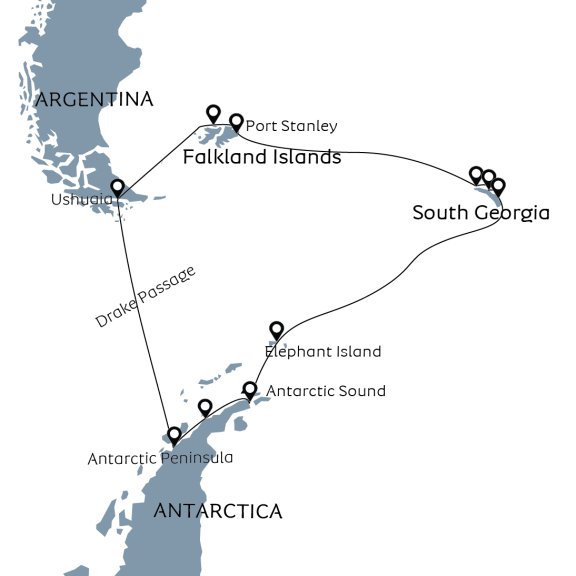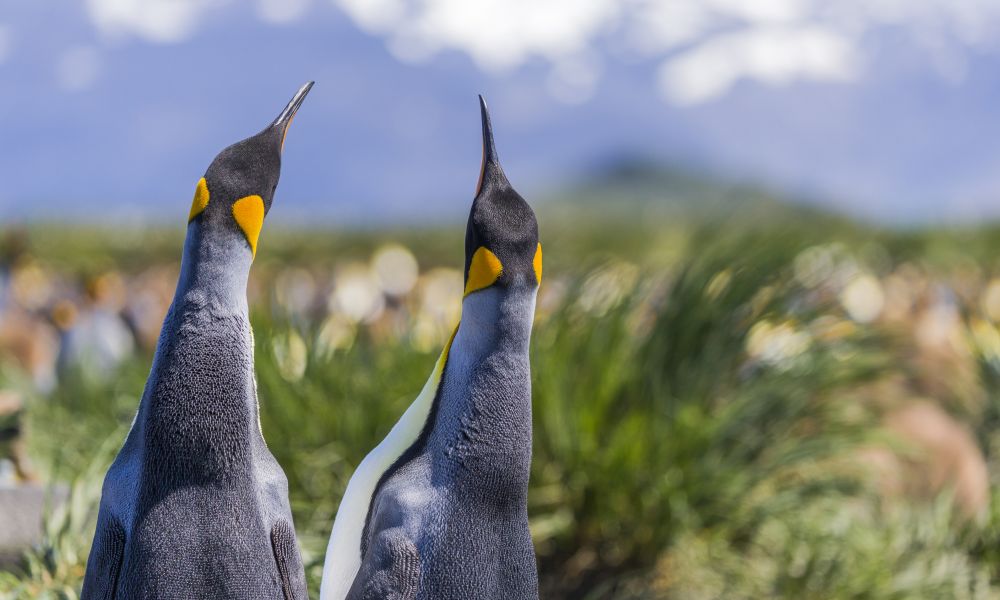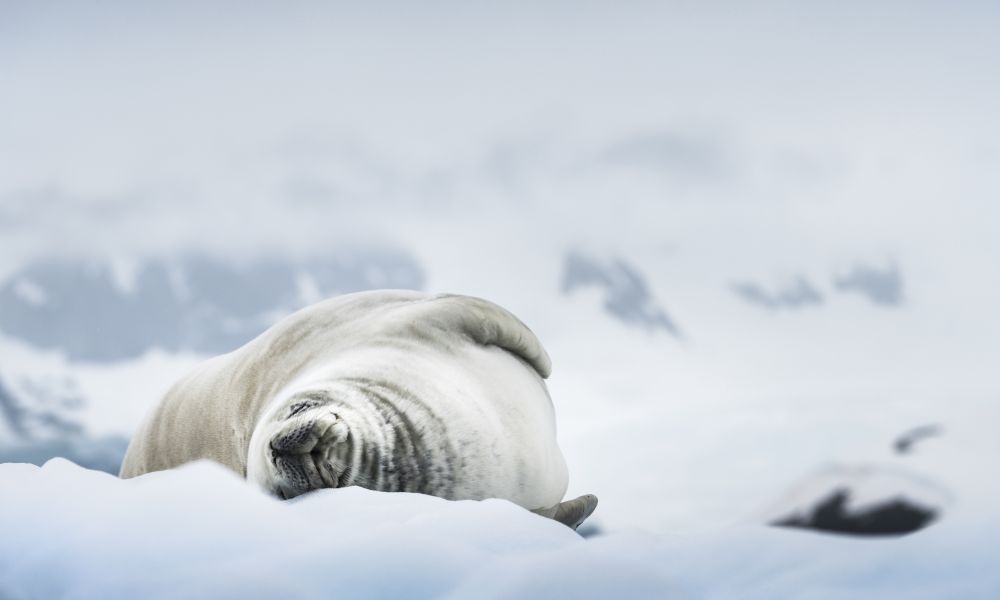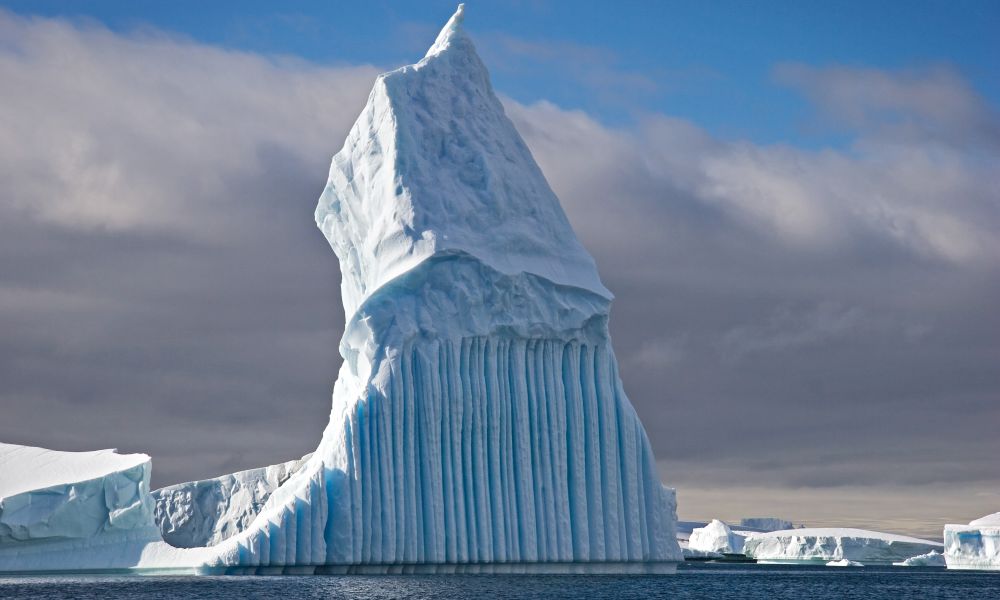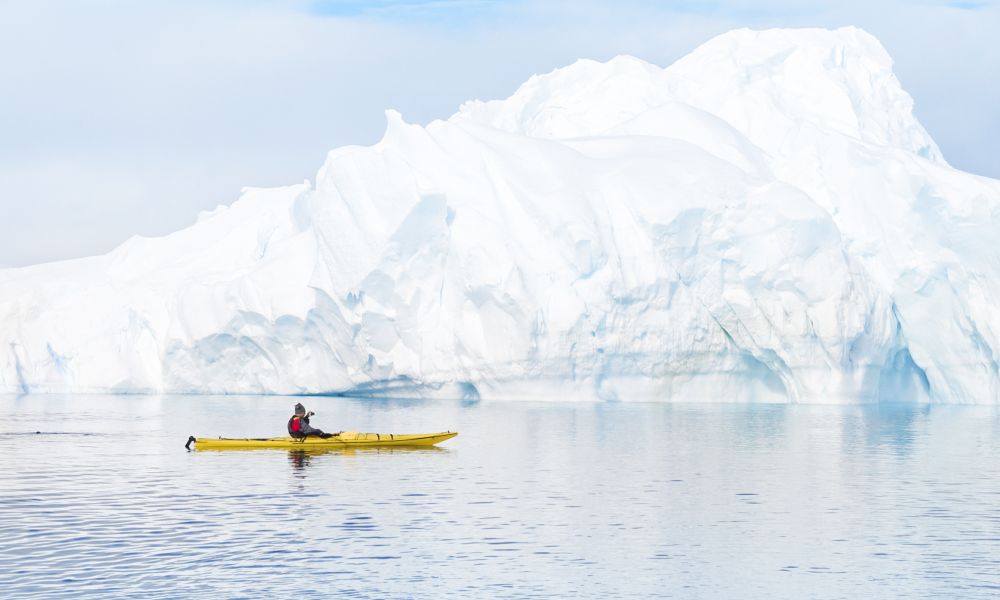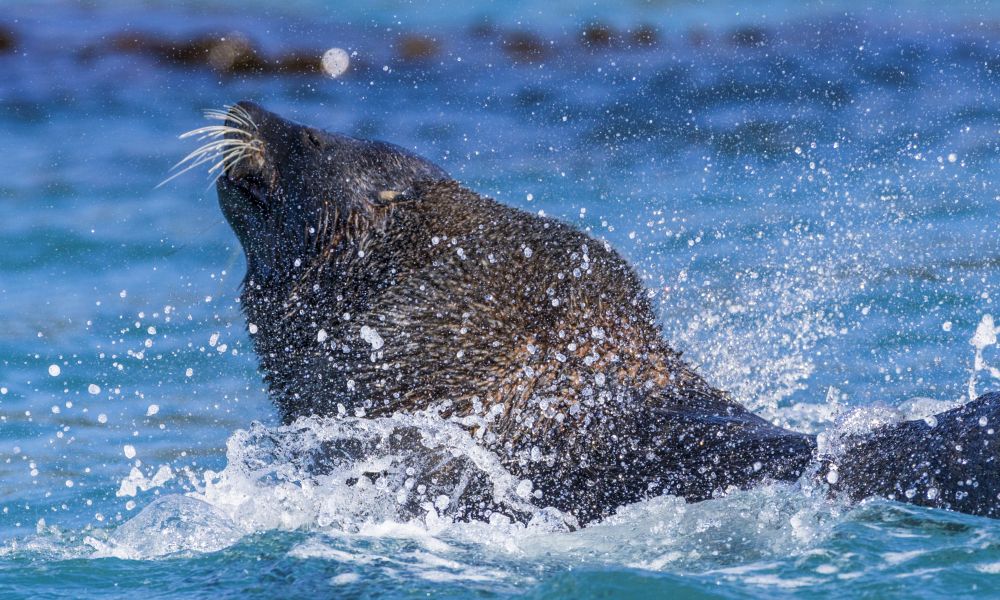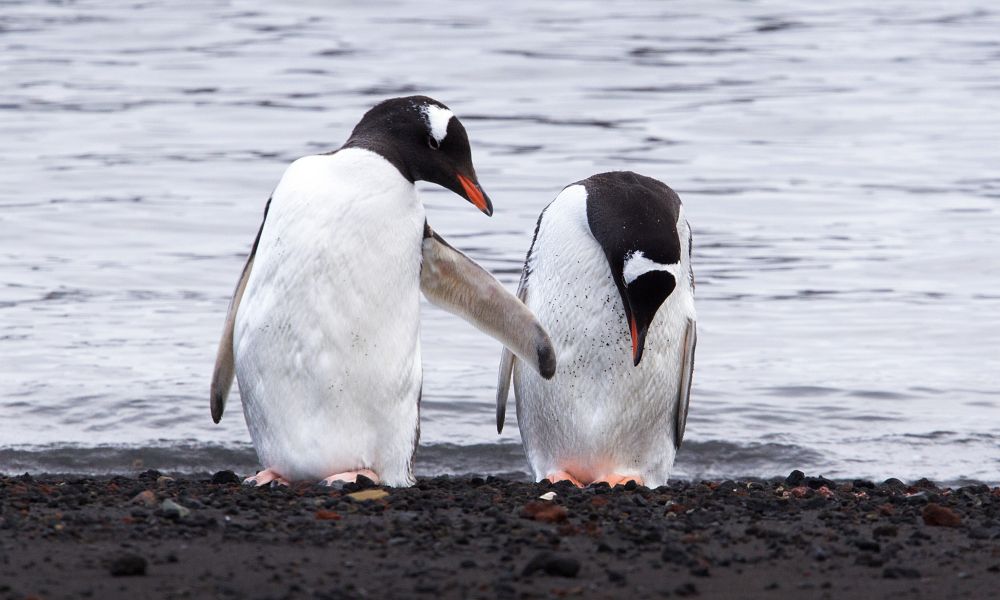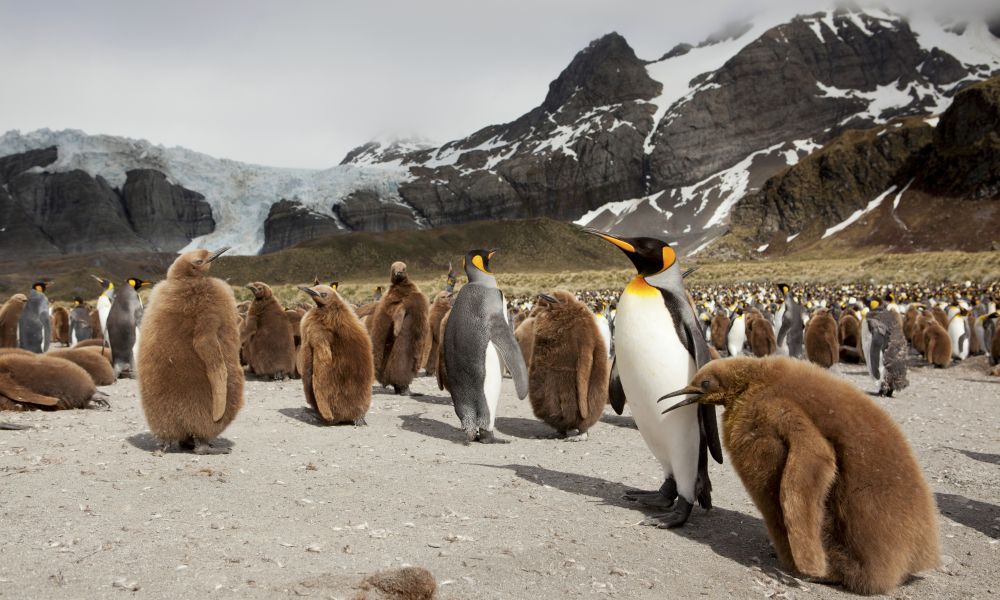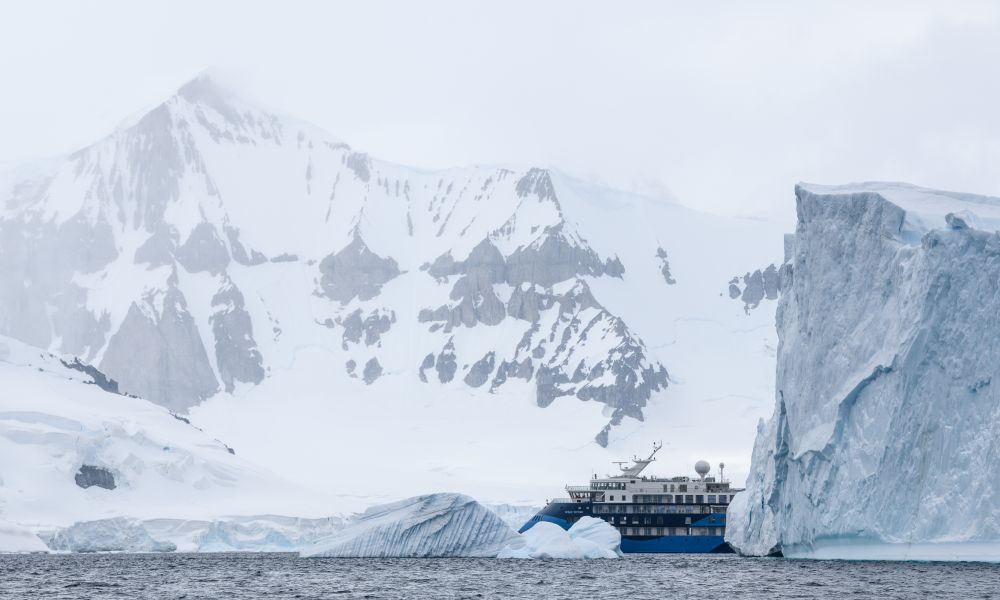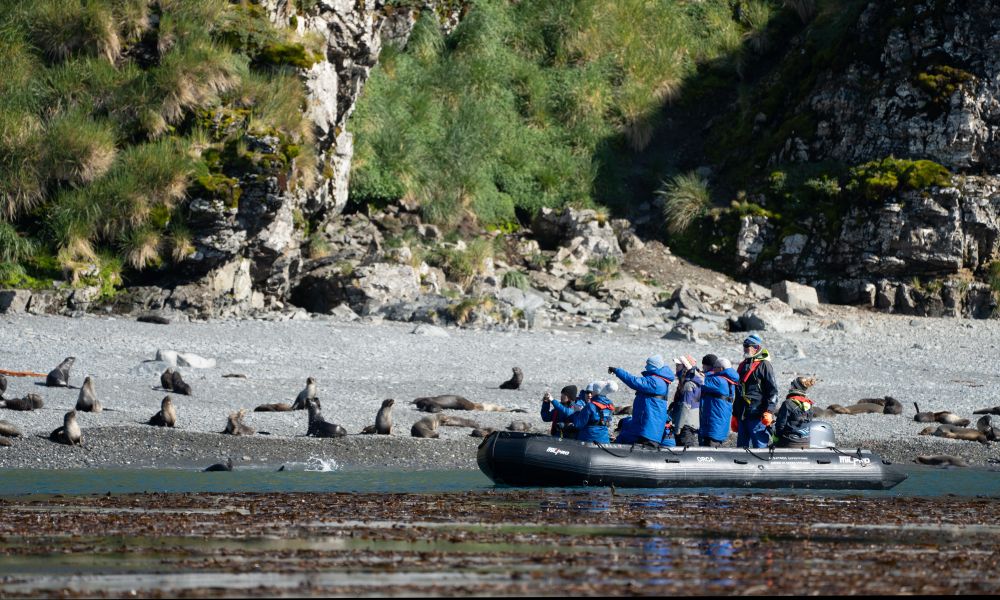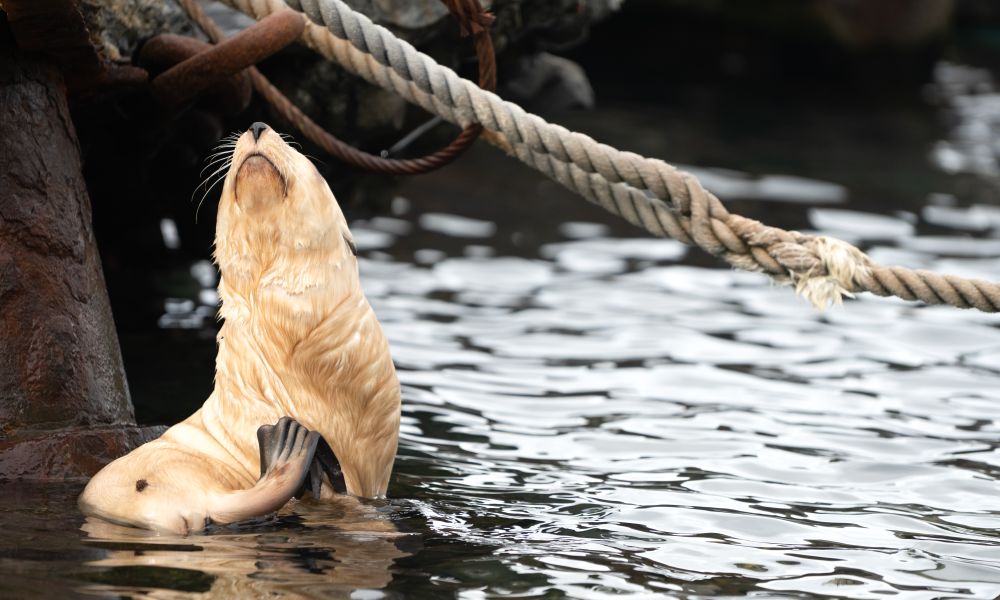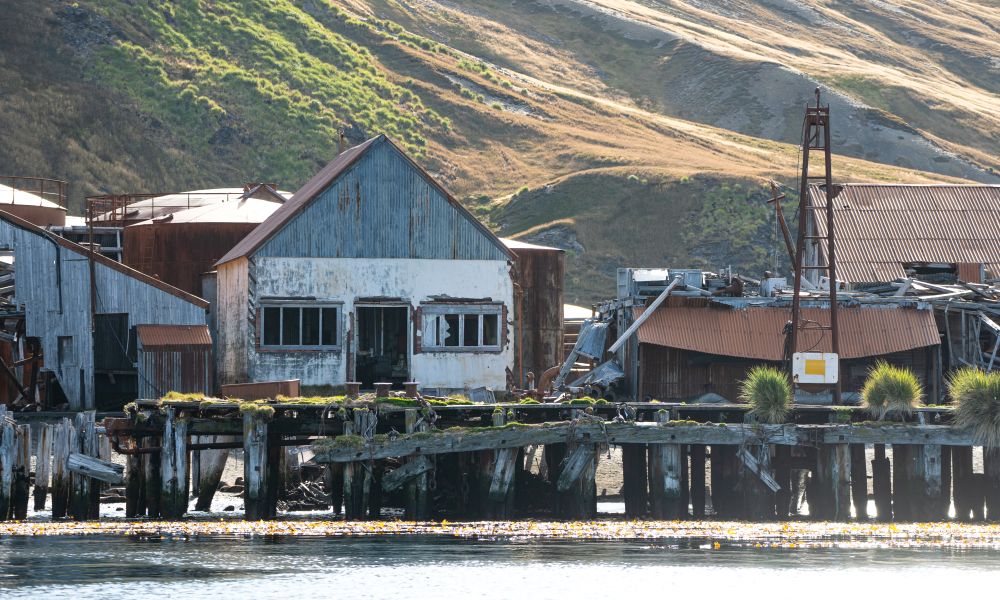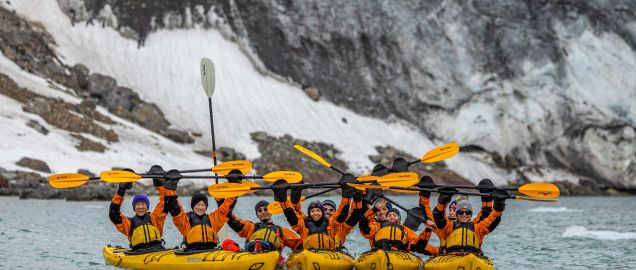We are thrilled to announce the official launch of our new website, Polar Latitudes Expeditions. Discover more in our latest news update, and visit our new website polar-latitudes.com.
On this extraordinary 18-day voyage, explore the fascinating Falkland Islands and mind-blowing South Georgia before heading to the South Shetlands Islands and the Antarctic peninsula. All the highlights of the Southern Ocean!
Departing Argentina's southernmost city of Ushuaia, we will venture east towards the Falkland Islands (Malvinas). A British Overseas Territory, the Falklands are a unique blend of British culture (expect tea and red phone boxes) and southern wildness, where penguins cavort alongside sheep on former battlefields.
From the Falklands, we venture onwards to South Georgia. A strip of jagged glacier-clad mountains piercing the brooding sky, South Georgia leaves a mark on every visitor, and it is no mystery why. The shores brim with wildlife, with thousands of King Penguins, elephant seals and Antarctic fur seals. The vast penguin colonies, seal-filled seas and albatross-packed skies have to be seen to be believed.
Continuing southward, we will delve deeper into the inlets and bays of the Antarctic Peninsula, entering the famous Gerlache Strait, where glittering ice cliffs and precipitous peaks rise straight out of the frigid water. Icebergs, glaciers, mountains and rugged snowfields characterise this wildly beautiful alien landscape. We always aim to visit locations which showcase the best of Antarctica, and we are always on the lookout for wildlife; feathered friends and jaw-dropping scenery and landscapes are guaranteed!
Any voyage in the Southern Ocean is an adventure, but with an average occupancy of 175 guests aboard Ocean Victory and Ocean Albatros, our cruises offer a unique experience for the brave few. Shore landings and Zodiac safaris will occupy our days, while our knowledgeable onboard Expedition Team will offer a selection of specially crafted lectures to inform your matchless expedition experience.
Facts about Falkland Islands, South Georgia and Antarctica
- Antarctica




